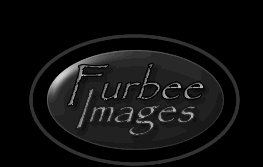 |
||||||||||||||||||
|
||||||||||||||||||

We have been taking pictures for over 35 years in the US and Canada. Most have been in the western parts of both countries. While there are many studied opinions as to how to generate quality images, our philosophy is fairly straightforward. Go to a beautiful place, take a picture and try to keep your finger out of the lens. In our travels, we have been blessed by the “kindness of strangers” in that people living in those areas, or who had visited those areas, have been extremely helpful by sharing their information about such things as location, best time of day or year, and places to stay. If you look at the internet, you will find some photographers who take the opposite path. While we understand the temptation to withhold information about a location, it is our belief that these places belong to, and should be shared by all of us.
At first, photography was an excuse to travel and now travel is an excuse to take pictures. Our focal point has been the national parks and monuments. However, we have in recent years, spent a lot of time in the southwest, having developed a love of slot canyons, hoodoos, and Rattlesnake beer.
Equipment: Our first camera was a $200 Fujica SLR. Our first photography session with it was at the St. Louis Zoo. It was a great camera. We couldn’t kill it; we finally had to retire it. Later we moved on to Canon 35 mm film cameras and Hasselblad 501CM and Flexbody. Our first digital SLR was a D30 followed by a 10D and currently we are shooting an EOS 5D Mark II and an EOS 1 DS Mark III. Film images were scanned on a Minolta Dimage Scan Multi Pro. We also use a Wacom Pen Tablet and various versions of Photoshop. Most of the square images are from medium format with file sizes of a little over 300 MB. Scanned 35 mm images are about 80 MB. While the current cameras produce images that are of the same proportions as 35 mm film, the other digital images are slightly different. Where possible, we will try to include some information regarding pictures and film. The vast majority of 35 mm and medium format film was Fuji Velvia (ISO 50) often with a polarizing filter.
Digital manipulations: Who? Us? OK, sometimes we just couldn't help it, so here's the deal. You can assume that all film images have had any emulsion debris or scratches removed. Hope we got them all. Color correction may also have been done. On the limited occasions where we have performed major manipulations such as inserting, replacing, or removing parts of an image, we will do our best to note that. That’s just our attempt to produce an image that is true to the subject as we saw it. Some people see that as cheating. Screw ‘em.
HDR Photography: If you know what HDR stands for, you probably already know more about High Dynamic Range photography than I do. It goes like this: People often bracket their scenic photos. That is, they shoot one photo at the desired exposure, then under and over exposure the next two shots. Some cameras will autobracket for you. You need to shoot in Camera RAW to get the best results. Now that you have three different exposures of the same scene, you can use Photoshop or dedicated HDR software to merge the three exposures into one picture. The software combines data from those three exposures and gives you color and light you can't find in the single photo. This doesn't always give great results, but some pictures are striking. We've included some photgraphs done in HDR.
Brent and Esther Furbee
If you experience any problems on this website, please contact the webmaster. Website designed by Dru Furbee.





